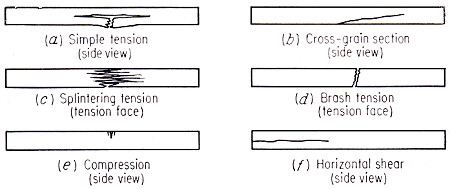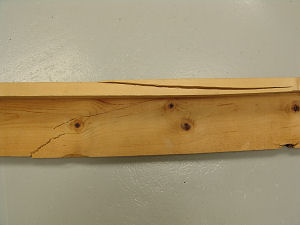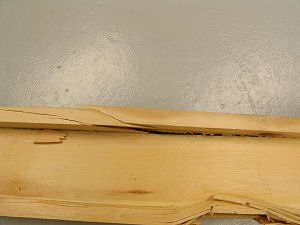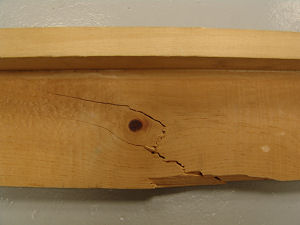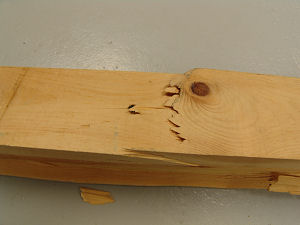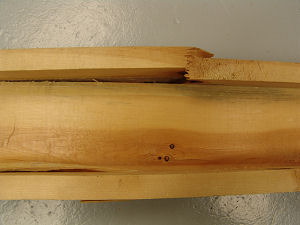- yield of extreme fibers
- leads to gradual sagging which finally becomes so great that the usefulness of the beam as a supporting member is destroyed
- buckling of compression fibers
- generally occurs in a sidewise direction
- may be either the primary or the secondary cause of failure
- sidewise buckling results in a clearly marked and generally a sudden failure
- excessive shearing stresses in the web
- usually causes primary failure only for short beams with thin webs
- usually causes secondary failure by web buckling or twisting action
- yielding of the overstressed portions near bearing blocks that transmit concentrated loads or reactions to beams
For brittle materials,
- failure occurs by sudden rupture
- failure usually occurs in the tensile fibers, because the tensile strength of these materials is typically only a fraction of the compressive strength
For wooden beams,
- it may fail in direct compression at the concave compression surface
- usually occurs in green timbers
- it may break in tension on the convex tension surface, because the tensile
strength of wood parallel to the grain is usually greater than its
compressive strength
- usually occurs in well-seasoned timbers
- it may fail by lateral deflection of the compression fibers acting as a column
- it may fail in horizontal shear along the grain near the neutral axis
- occurs suddenly and is more common in well-seasoned timbers of structural sizes than in green timbers or in small beams
- it may fail in compression perpendicular to the grain at points of concentrated load.
Values of the proportional limit determined from beam tests are generally higher than values obtained from tension or compression tests because yielding of the extreme fibers is masked by the supporting effect of the less highly stressed fibers nearer the neutral axis. For beams of brittle material, the nominal fiber stress at rupture as computed by the flexure formula (the "modulus of rupture" in bending) is usually appreciably greater than the true tensile strength of the material.
From The Testing and Inspection of Engineering Materials, 3rd Ed., by H.E. Davis, G.E. Troxell, and C.T. Wiskocil, McGraw-Hill, 1964, pp. 170-1, 178.
